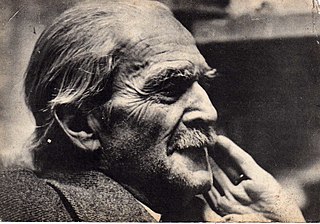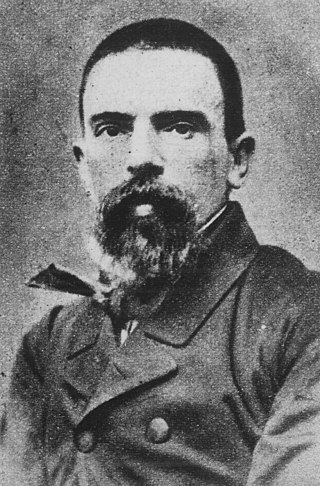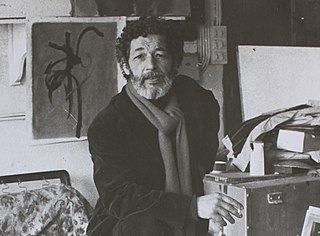Related Research Articles

The Argentine Confederation was the last predecessor state of modern Argentina; its name is still one of the official names of the country according to the Argentine Constitution, Article 35. It was the name of the country from 1831 to 1852, when the provinces were organized as a confederation without a head of state. The governor of Buenos Aires Province managed foreign relations during this time. Under his rule, the Argentine Confederation engaged in conflicts with Brazil, Bolivia, Uruguay, France and the United Kingdom, as well as other Argentine factions during the Argentine Civil Wars.

José Gervasio Artigas Arnal was a soldier and statesman who is regarded as a national hero in Uruguay and the father of Uruguayan nationhood.

The Viceroyalty of the Río de la Plata meaning "River of the Silver", also called "Viceroyalty of the River Plate" in some scholarly writings, in southern South America, was the last to be organized and also the shortest-lived of the Viceroyalties of the Spanish Empire in the Americas. The name "Provincias del Río de la Plata" was formally adopted in 1810 during the Cortes of Cádiz to designate the Viceroyalty of the Río de la Plata.

The Battle of Caseros was fought near the town of El Palomar, Argentina, on 3 February 1852, between forces of the Argentine Confederation, commanded by Juan Manuel de Rosas, and a coalition consisting of the Argentine provinces of Entre Ríos and Corrientes, the Empire of Brazil, and Uruguay.

The Uruguayan Civil War, also known in Spanish as the Guerra Grande, was a series of armed conflicts between the leaders of Uruguayan independence. While officially the war lasted from 1839 until 1851, it was a part of armed conflicts that started in 1832 and continued until the final military defeat of the Blancos faction in 1904.

Laura Ana "Tita" Merello was an Argentine film actress, tango dancer and singer of the Golden Age of Argentine Cinema (1940–1960). In her six decades in Argentine entertainment, at the time of her death, she had filmed over thirty movies, premiered twenty plays, had nine television appearances, completed three radio series and had had countless appearances in print media. She was one of the singers who emerged in the 1920s along with Azucena Maizani, Libertad Lamarque, Ada Falcón, and Rosita Quiroga, who created the female voices of tango. She was primarily remembered for the songs "Se dice de mí" and "La milonga y yo".

China Zorrilla was an Uruguayan theater, film, and television actress, also director, producer and writer. An immensely popular star in the Rioplatense area, she is often regarded as a "Grand Dame" of the South American theater stage.
Luis Camnitzer is a German-born Uruguayan artist, curator, art critic, and academic who was at the forefront of 1960s Conceptual Art. Camnitzer works primarily in sculpture, printmaking, and installation, exploring topics such as repression, institutional critique, and social justice.

The Battle of Las Piedras was fought on May 18, 1811 as part of the Uruguayan struggle for independence.
There are many landmarks in Buenos Aires, Argentina, some of which are of considerable historical or artistic interest.

José Luis Zorrilla de San Martín was a Uruguayan sculptor and painter. One of the pivotal sculptors from Uruguay, his most significant impact was through the monuments he created in the capital city of Montevideo. His style displayed elements of aesthetic baroque incorporated with modern sculpture.

Juan Manuel Blanes was a Uruguayan painter of the Realist school.
Juan Mathias Bogado Castro is an Argentine footballer, who currently plays for Juventud de Las Piedras.

The Great Siege of Montevideo, named as Sitio Grande in Uruguayan historiography, was the siege suffered by the city of Montevideo between 1843 and 1851 during the Uruguayan Civil War.

Isabelino Canaveris was an Uruguayan patriot, military, revolutionary and politician, who served as president of the National Party in the Argentine Republic. He participated in most of the armed confrontations between the Blancos and Colorados.
Juan Manuel Canaveris (1804-1868) was an Argentine jurist and politician, who served in Buenos Aires and Montevideo as attorney, teacher and military man. He participated of the escort of honor in the funerals of Manuel Dorrego, and collaborated in the early days of government of Juan Manuel de Rosas.

Reinaldo Giudici was an Italian-born Argentine painter, best known for his early genre works in the Costumbrismo style.

Jorge Enrique Brito was an Argentine muralist, medalist, art educator, sculptor, and painter. He is best known for his murals in Buenos Aires and Montevideo and the bronze medals he designed for the Monnaie de Paris.

Dumas Oroño was a Uruguayan artist, cultural manager, and teacher. His artistic work spanned several disciplines, including painting, engraving, ceramics, murals, and jewelry design.

Francisco Cafferata was one of the first significant Argentine sculptors.
References
- Tomo II: Plásticos uruguayos, compilado por la Biblioteca del Poder Legislativo, 1975
- Juan Manuel Ferrari, 1874–1916: diciembre 1974, Montevideo, Uruguay. (Exposición de homenaje) Comisión Nacional de Artes Plásticas.
- Museo Nacional de Artes Visuales de Uruguay.